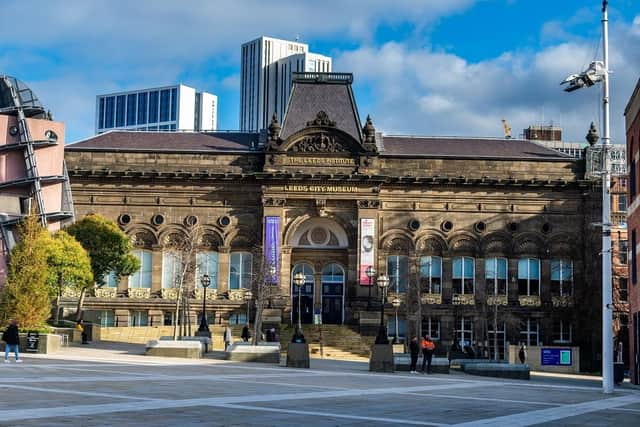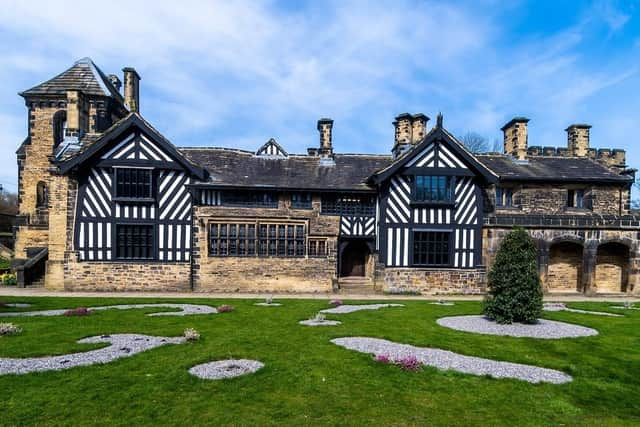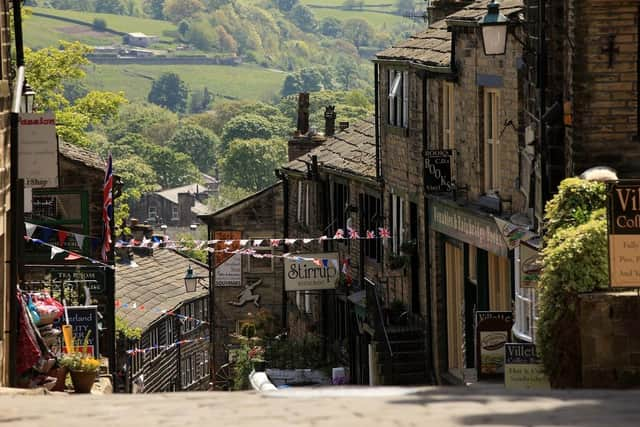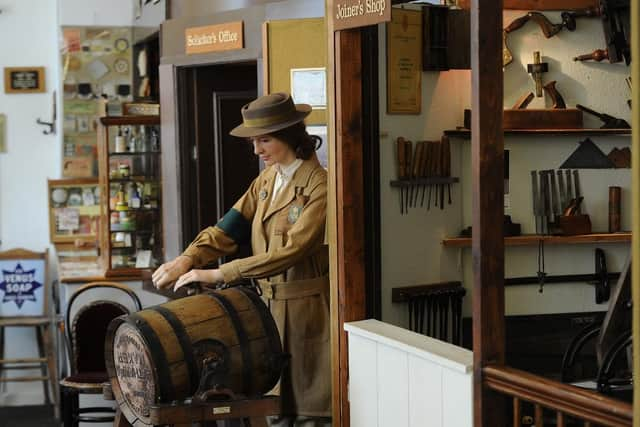Yorkshire’s oldest museums and the history behind them including Leeds City Museum, Shibden Hall where Anne Lister grew up and Bronte Parsonage Museum
While some of these museums were originally founded with the sole purpose of educating visitors of the history of cities, towns and villages of Yorkshire, others were built as residential homes for various historic figures. Shibden Hall was the home of famous diarist and ‘the first modern lesbian’ Anne Lister, who inspired the BBC drama Gentleman Jack and Bronte Parsonage Museum was originally the home of Charlotte, Emily and Anne Bronte.
Emily Bronte’s Wuthering Heights was almost a source used to illustrate life in Yorkshire showing the type of people that live here, their characteristics and elaborating on the stormy Yorkshire moors. Another fascinating museum in the region celebrates the rich heritage of Yorkshire coastline, Whitby Museum, and its connection with Bram Stoker’s famous book Dracula.
Advertisement
Hide AdAdvertisement
Hide AdNot only that, but the City of Leeds is Yorkshire’s largest city and the leading centre of trade and commerce, it is also one of the biggest draws to the region for tourists for its vibrant space filled with shops, cinemas, restaurants, entertainment and great night life. It was a small borough in the 13th century, a market town in the 16th century and expanded into a major city hub in the 1760s by becoming a significant production centre - the Leeds City Museum unveils the depth of its history.


Oldest museums in Yorkshire and their history
Leeds City Museum
Leeds City Museum is housed in the former Mechanics’ Institute built by Cuthbert Brodrick in Cookridge Street (now called Millennium Square) and is one of the nine sites in the Leeds Museum and Galleries group.
Admission is free and it was originally established in 1819 in Philosophical Hall, Bond Street, by the Leeds Philosophical and Literary Society and was opened to the public in 1821.


Philosophical Hall was rebuilt in Park Row in 1862, where its stone portico can still be viewed on the west side of the road.
Advertisement
Hide AdAdvertisement
Hide AdIn 1921, control of the museum was passed to the Corporation of Leeds which later became Leeds City Council.
The museum building and artefacts were severely damaged by bomb attacks in 1941 and 24 years later the museum was closed with a few exhibits being moved to a couple of rooms in the city library in 1966.
Following a significant influx in funding of £19.5 million from National Lottery in 2001, Leeds City Museum was able to reopen in 2008 after refurbishment and rebranding.


Shibden Hall Museum
Shibden Hall dates back to 1420 and provides visitors with an insight into the journey of the people who lived and worked there, including the notable diarist Anne Lister.
Advertisement
Hide AdAdvertisement
Hide AdIts architecture is a mixture of styles reflecting its interesting history and the hall is surrounded by the beautiful gardens and estate. It is also the focal point of the popular BBC drama Gentleman Jack written by Sally Wainwright.
There is a 17th century barn just opposite the hall and workshops house a carriage collection and displays relating to different crafts, including a blacksmiths, coopers, wheelwrights and saddlers.


Bronte Parsonage Museum
This writer’s house museum has been maintained by the Bronte Society, one of the oldest literary societies in the world, in honour of the Bronte sisters. It is the former family home of the sisters, the parsonage in Haworth, West Yorkshire, where they spent most of their childhood and wrote their famous novels.
The parsonage was built between 1778 and 1779 and in 1820, Patrick Bronte moved into the residence with his wife Maria and six children. The stunning moors had a profound impact and influence on the writing of Charlotte, Emily and Anne.
Advertisement
Hide AdAdvertisement
Hide AdThe building is listed Grade I on the National Heritage List for England and was used as a location in the 1970 film The Railway Children, where it featured as the home of Dr Forest.
The museum was opened to the public in 1928.
Knaresborough Courthouse Museum
The heart of the Courthouse Museum is the Elizabethan courtroom, with original bench and panel features dating back to the 16th century.
It is part of Knaresborough Castle which can be traced back to 1100 and the oldest part of the castle is the Courthouse undercroft thought to also date back to the 12th century. The Courthouse museum itself is thought to have been built in the 14th century and rebuilt between 1590 to 1610.
The upper floor of the courthouse was originally used as a courthouse for the Honour of Knaresborough and is mentioned in 1561 as a ‘House of Records’.
Fairfax House
Advertisement
Hide AdAdvertisement
Hide AdThis Georgian townhouse is located near Clifford’s Tower and York Castle Museum and was likely built in the early 1740s for a local merchant and in 1759 it was purchased by Charles Gregory Fairfax, 9th Viscount Fairfax of Emley, who arranged for the interior to be remodelled by John Carr, an architect.
Following the Viscount’s death in 1772, the house was sold and passed through a number of local families before being used as a Gentleman’s Club, a Building Society and a cinema.
The property was bought by York Civic Trust in the 1980s and completely restored to its former status. It is now a museum open to the public and a Grade I listed building.
Nidderdale Museum
The museum was founded in 1975 by a group of people who shared a similar interest in bringing back the traditional lifestyle which they felt was quickly fading after the Second World War.
Advertisement
Hide AdAdvertisement
Hide AdFarms were adopting new methods, the former lead and stone industries had crumbled and families were becoming dispersed.
Whilst the museum is relatively new, the premises are provided by Harrogate Borough Council (now North Yorkshire County Council) in the building originally erected as the Pateley Bridge Union Workhouse in 1863 to replace an earlier workhouse on Bishopside Moor. This is now known as The Old Workhouse.
Yorkshire Museum
The Yorkshire Museum is one of the oldest purpose-built museums in the country; it first opened in 1830 as the new home for the collections of the Yorkshire Philosophical Society.
The first keeper was famous geologist John Phillips and the museum is built in the grounds of York’s Abbey, St Mary’s, on land given by royal grant in 1828.
Advertisement
Hide AdAdvertisement
Hide AdThe archaeological collection relates mainly to York and North Yorkshire and ever since 1830, most of the objects found within the city have become part of the museum’s collection.
Beck Isle Museum
The museum is located within a Grade II listed building which was inherited by William Marshall, a leading agriculturist, from his brother John in 1816.
William intended to convert the building to create England’s first agricultural college, but he died in 1818 before its completion.
The building was then passed down to his sister Elizabeth Wells and for the rest of the 19th century the building became the residence for various practising doctors.
Advertisement
Hide AdAdvertisement
Hide AdLocal people interested in preserving the history of Pickering chose to set up a small museum and art gallery in 1967. The ground floor of the house, which formerly belonged to Dr Murphy, was transferred into a Museum and Arts Centre.
The Bayle Museum
Archaeological studies have found the original stonework dates to the 12th century when it was originally thought to have been a gatehouse to a wooden palisade castle built by William Le Gros in 1143. There is not much information open to the public about its further use until the early 14th century.
The Bayle Gate was renovated to become the Gatehouse to the Bridlington Priory in the 14th century; the ground floor of the then two-storey building included a Porter and an Almoner.
Since the monastery dissolution by Henry VIII, the Bayle Gate has been used a number of ways including a prison, a court of the town, a schoolroom for merchant’s apprentices, a Garrison for Napeolonic soldiers on route to Scarborough Castle, a Town Hall and a meeting room for the Lords Feoffees.
Advertisement
Hide AdAdvertisement
Hide AdToday the Bayle Gate is a Grade I listed building and houses the Bayle Museum.
Whitby Museum
This coastal attraction is an independent museum which was founded in 1823.
From the age of dinosaurs to the history of large sea creatures such as whales, this museum houses some of the oldest fossils and visitors can learn all about the history of the whaling industry and how it impacts our lives in the 21st century.
Whitby is famous for its jet, as well as the local pioneer Captain Cook and being the location where Bram Stoker was inspired to write his famous novel.
Comment Guidelines
National World encourages reader discussion on our stories. User feedback, insights and back-and-forth exchanges add a rich layer of context to reporting. Please review our Community Guidelines before commenting.
